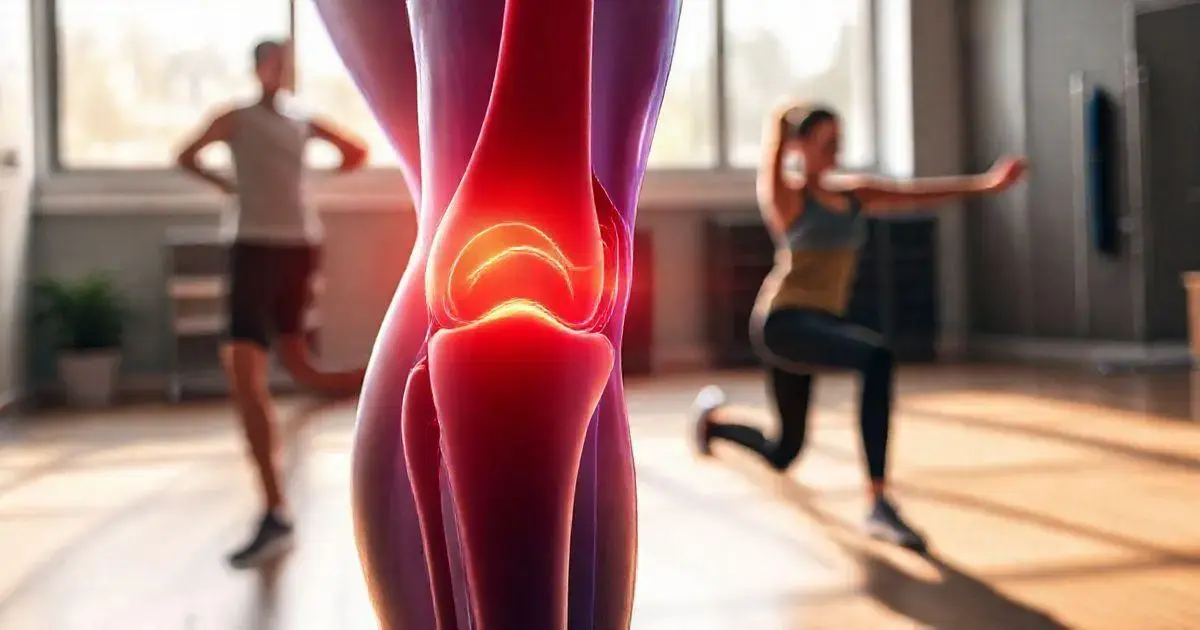Inside Knee Pain: What Causes It?
Do you suffer from nagging inside knee pain? Understanding the underlying causes is crucial for effective treatment and prevention. From overuse injuries to structural issues, this article delves into the common reasons behind this discomfort. Stay tuned to learn how you can alleviate inside knee pain and get back to enjoying your daily activities pain-free.

Common Causes of Inside Knee Pain
1. Overuse and Strain:
One of the most common causes of inside knee pain is overuse and strain. This can occur from activities such as running, jumping, or repetitive movements that put stress on the knee joint. Over time, this can lead to inflammation and pain on the inside of the knee. To prevent this, it is essential to gradually increase the intensity and duration of activities, use proper form, and allow for adequate rest periods to prevent overuse injuries.
2. Poor Biomechanics:
Issues with the alignment of the knee joint and surrounding muscles can contribute to inside knee pain. Poor biomechanics, such as flat feet, weak hip muscles, or tight muscles around the knee, can place added stress on the inside of the knee joint. Addressing these biomechanical imbalances through appropriate exercises, stretching, and possibly orthotic devices can help alleviate inside knee pain and prevent future injuries.
3. Meniscal Tears:
A common injury that can cause inside knee pain is a meniscal tear. The meniscus is a cartilage in the knee joint that acts as a cushion between the thighbone and shinbone. Tears in the meniscus can result from sudden twisting movements or degeneration over time. Treatment for meniscal tears may vary depending on the severity, ranging from conservative measures like rest and physical therapy to surgical interventions like arthroscopic surgery.
4. Ligament Injuries:
Injuries to the ligaments in the knee, such as the medial collateral ligament (MCL) or anterior cruciate ligament (ACL), can cause inside knee pain. These injuries often result from sudden trauma or sports-related incidents. Treatment for ligament injuries typically involves rest, immobilization, physical therapy, and in severe cases, surgical reconstruction to stabilize the knee joint and restore function.
5. Arthritis:
Arthritis, particularly osteoarthritis, can also be a common cause of inside knee pain, especially in older adults. Osteoarthritis is characterized by the degeneration of cartilage in the knee joint, leading to pain, stiffness, and reduced mobility. Management of arthritis-related knee pain may include medications, joint injections, physical therapy, weight management, and possibly surgical options like knee replacement in severe cases.

Understanding the Anatomy of Inside Knee Pain
Inside knee pain can be attributed to various structures within the knee joint. One common cause is the medial meniscus, a C-shaped piece of cartilage that acts as a cushion between the thigh bone and shin bone. Injuries or degeneration of the medial meniscus can lead to pain on the inner side of the knee. Additionally, the medial collateral ligament (MCL), which stabilizes the inner knee, can be strained or torn, causing discomfort. Furthermore, issues with the patellar tendon or plica within the knee can also result in inside knee pain.
Understanding the anatomy of inside knee pain is crucial for accurate diagnosis and effective treatment. By pinpointing the exact structure or tissue causing the pain, healthcare professionals can tailor interventions to address the specific issue. Whether it involves rest, physical therapy, or in severe cases, surgical intervention, a thorough understanding of the knee joint’s anatomy is essential for managing inside knee pain effectively.
Individuals experiencing inside knee pain should seek professional medical evaluation to determine the underlying cause. Through a combination of physical examination, imaging tests like MRI, and possibly arthroscopy, healthcare providers can identify the source of the pain and recommend appropriate treatment options.
Overall, a comprehensive understanding of the anatomical structures within the knee joint is vital in addressing inside knee pain. By recognizing the complexities of the knee’s inner workings, healthcare professionals can develop targeted treatment plans to alleviate discomfort and improve the individual’s quality of life.
Lifestyle Factors Impacting Inside Knee Pain
Lifestyle choices play a significant role in the development and management of inside knee pain. Excess weight puts added stress on the knees, particularly the inner side, leading to accelerated wear and tear of cartilage and ligaments. Maintaining a healthy weight through a balanced diet and regular exercise can reduce the risk of inside knee pain.
Furthermore, engaging in high-impact activities or sports without proper conditioning and technique can contribute to inside knee pain. The repetitive stress on the knee joint, especially on the inner structures, can result in inflammation and discomfort. It is essential to practice proper form, warm-up adequately, and wear appropriate footwear to prevent inside knee pain.
Sedentary lifestyles also pose a risk factor for inside knee pain. Prolonged sitting or standing can weaken the muscles around the knee, leading to instability and potential injuries. Incorporating regular stretching, strengthening exercises, and breaks from prolonged sitting can help improve knee joint health and reduce the likelihood of inside knee pain.
In conclusion, lifestyle factors such as weight management, physical activity choices, and sedentary behavior significantly impact inside knee pain. By making conscious decisions to maintain a healthy weight, engage in knee-friendly activities, and avoid prolonged inactivity, individuals can reduce their vulnerability to inside knee pain and promote overall knee health.
The Role of Physical Therapy in Managing Inside Knee Pain
Physical therapy plays a crucial role in the management of inside knee pain by addressing underlying issues, improving strength and flexibility, and promoting overall knee function. Through tailored exercises and modalities, physical therapists can target specific areas of weakness or imbalance that contribute to inside knee pain. By strengthening the muscles around the knee joint and enhancing its stability, physical therapy can alleviate discomfort and prevent future injuries.
Additionally, physical therapists employ manual techniques to reduce pain and inflammation in the affected knee. Techniques such as soft tissue mobilization, joint mobilization, and therapeutic modalities like ultrasound or electrical stimulation can help relieve inside knee pain and promote healing of damaged tissues.
Education is another essential component of physical therapy in managing inside knee pain. Patients learn about proper body mechanics, ergonomics, and exercises to support their knee health and prevent exacerbation of symptoms. By empowering individuals with knowledge and tools to care for their knees, physical therapy fosters long-term management of inside knee pain.
Regular physical therapy sessions, combined with at-home exercises and self-care strategies, are key to effectively managing inside knee pain. By working closely with a skilled physical therapist and diligently following the prescribed treatment plan, individuals can experience relief from inside knee pain and improve their overall knee function and mobility.
Conclusion
Inside knee pain can stem from various causes, including overuse, poor biomechanics, meniscal tears, ligament injuries, and arthritis. Understanding these factors is crucial for identifying the source of the discomfort and finding effective treatment options. Proper diagnosis often involves a combination of physical examinations and imaging tests, enabling healthcare providers to create targeted treatment plans tailored to each individual’s needs.
Lifestyle choices and physical activity levels significantly impact the risk of developing inside knee pain. Maintaining a healthy weight, engaging in low-impact exercises, and avoiding repetitive stress on the knee are vital steps in preventing ailments. Incorporating regular stretching and strength training can enhance knee stability and support overall joint health, making it essential for individuals to be proactive in their approach to knee care.
Physical therapy serves as a valuable tool for managing inside knee pain by addressing underlying issues, improving mobility, and promoting healing. Through a personalized exercise regimen, manual techniques, and education on self-care strategies, physical therapists empower individuals to take control of their knee health. By committing to physical therapy and maintaining healthy lifestyle habits, individuals can alleviate pain, restore function, and enhance their quality of life.
